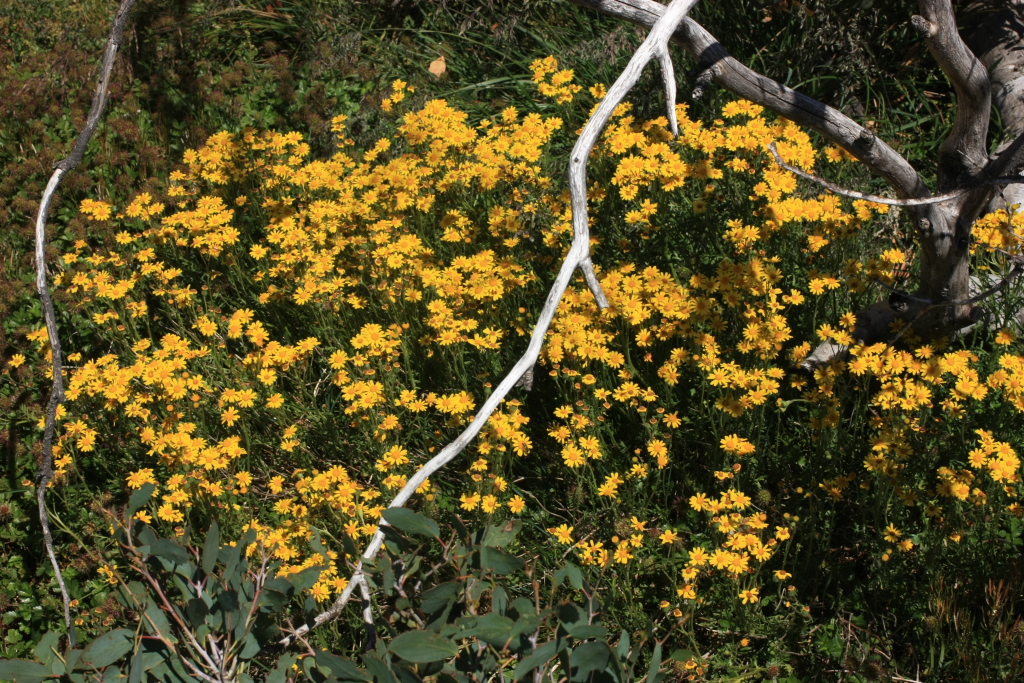Senecio pinnatifolius var. alpinus
(Ali) I.Thomps.Rhizomatous perennial herb, erect, suberect, or ascending to c. 1 m high, with tap-root poorly or moderately developed. Mid-stem leaves 2–10 cm long, undivided to bipinnatisect, subfleshy. Peduncles with sparse to somewhat dense indumentum of short hairs; involucre 3.5–6.0 mm long; bracts mostly c. 13, with apex brown or black; stereome slightly fleshy, sometimes slightly pubescent; bracteoles 6–12, ovate to narrow-ovate, 1.5–3.0 mm long, 0.6–1.2 mm wide, with margin typically ± densely hairy. Cypselas 2.5–3.5 mm long; hairs of cypselas of ray florets not exceeding pappus-ring. Flowers Dec.–Feb.
EGU, HSF, HNF, MonT, VAlp. Also NSW, ACT, Tas. Occasional in subalpine forest and woodland, damp herbfield and grassland throughout the alps.
At slightly lower altitudes, this variety appears to grade into var. pinnatifolius through a large-leaved form possibly equivalent with S. rupicola A. Rich., but here not regarded as warranting formal recognition.
Walsh, N.G. (1999). Senecio. In: Walsh, N.G.; Entwisle, T.J., Flora of Victoria Vol. 4, Cornaceae to Asteraceae, pp. 941–965. Inkata Press, Melbourne.
 Spinning
Spinning

